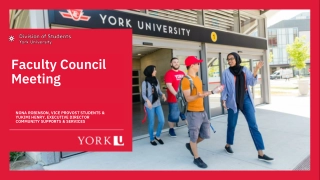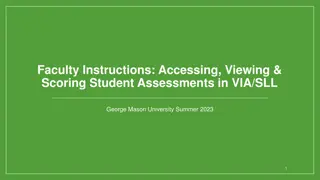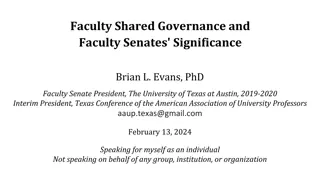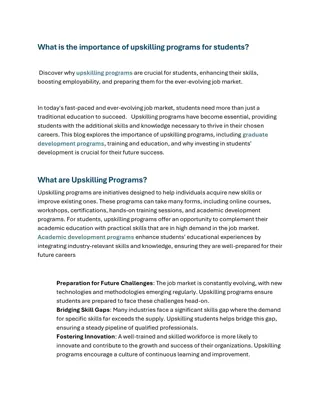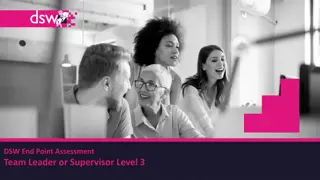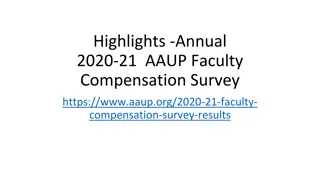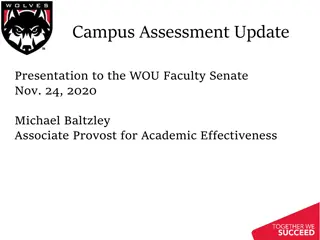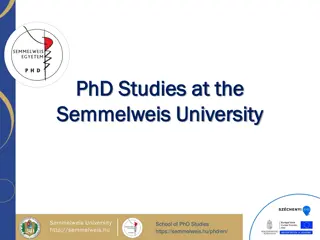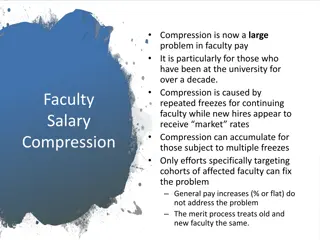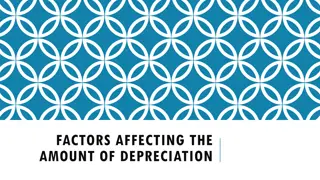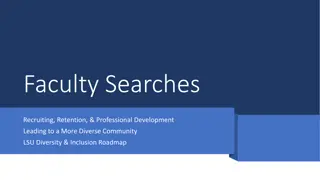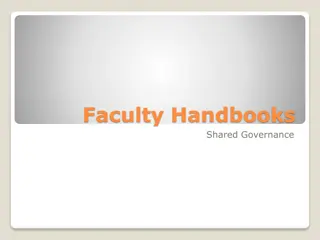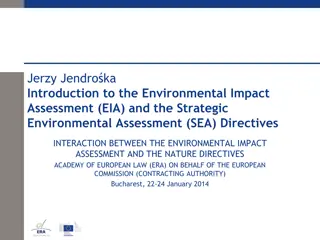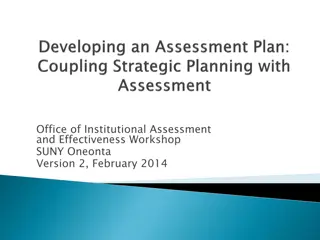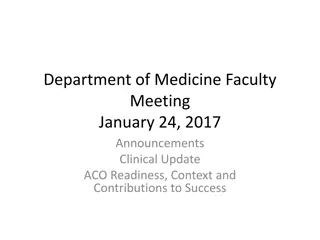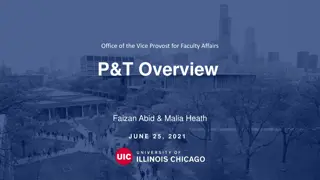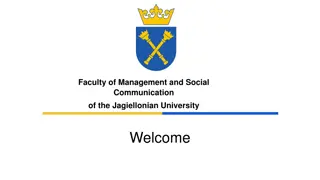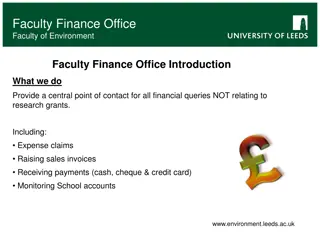
Enhancing PhD Program Assessment for Faculty and Students
Explore how to make assessment in PhD programs more valuable for faculty and students, covering phases of implementation, campus-wide initiatives, example program learning outcomes, and challenges encountered.
Download Presentation

Please find below an Image/Link to download the presentation.
The content on the website is provided AS IS for your information and personal use only. It may not be sold, licensed, or shared on other websites without obtaining consent from the author. If you encounter any issues during the download, it is possible that the publisher has removed the file from their server.
You are allowed to download the files provided on this website for personal or commercial use, subject to the condition that they are used lawfully. All files are the property of their respective owners.
The content on the website is provided AS IS for your information and personal use only. It may not be sold, licensed, or shared on other websites without obtaining consent from the author.
E N D
Presentation Transcript
Making assessment in PhD programs more useful for faculty and students Anna Sher, PhD Assistant Director for Assessment & Survey Research UC Santa Cruz Assessment as Research Symposium at UC Merced March 8, 2017
Overview Campus initiative and phases of implementation Factors that make each phase of assessment feasible difficult valuable Best practices / valuable results Future directions
UCSC campus-wide initiative & framework One framework for both undergraduate and graduate programs Campus-wide initiative across five academic divisions Faculty-led process Program-specific outcomes vs. a common set for all graduate programs
Example of the PLOs Ph.D. graduates will demonstrate: 1. Mastery of the fundamental knowledge in microbiology or environmental toxicology. 2. Ability to conduct independent research, and manage a research project in either microbiology or environmental toxicology. 3. Ability to communicate scientific concepts and results in both written and oral forms. 4. Be equipped with interdisciplinary skills needed for success in microbiology and environmental toxicology fields, where there is a great need for scientists who have broad, interdisciplinary training. 5. Knowledge and understanding of ethical standards in proposing and executing professional scientific research. 6. Ability to effectively teach science in a classroom environment.
Phase 1 Articulating Graduate Program Learning Outcomes Feasible: almost all programs articulated within the first year Difficult: for interdisciplinary programs or new, non- traditional programs Valuable: generated discussions among faculty to clarify the program s goals and curriculum (in established and recently founded programs) Remaining Challenges: PLOs too general or formal, too specific, overly centered on the traditional, academic career path, still new & not used by students or faculty
Phase 2 Linking Outcomes to the curriculum and milestones Feasible: PhD programs have a similar structure: 2 years of coursework, QE, and Thesis Defense Almost all programs generated curriculum matrices by the end of the second year Difficult: include individualized learning experiences (courses outside home department, sole or collaborative publication, research assistantship, internship) Valuable: for review of the curriculum, especially if wanted to restructure Remaining challenges: use the assessment results to discuss the curriculum
Phase 3 Developing a timeline and tools to measure outcomes Feasible: developing assessment tools (rubrics) for some outcomes, esp. independent research skills and communication, assessed at QE and Defense, data collection for 2-3 years Difficult: developing rubrics for foundational knowledge, often interdisciplinary, outcomes measured in first or second years Valuable: encourages faculty conversations about curriculum and exams Remaining challenges: switching from individual-centered evaluation of student progress to program-level analysis; thinking ahead about how they may use the results
Phase 4 Conducting assessment and storing data Feasible: established practice of committee-based evaluation at QE and Defense Difficult: switching from pass/fail & informal feedback to providing rubric results to students Difficult: logistics of how to store data over time Valuable in itself if results are shared with the student (assessment as teaching) Remaining challenges: quality of rubrics and using them as formative feedback
Phases 5-6 Interpreting the results and using the results Feasible: depends on the results Difficult: if too general or no insight Valuable: yes if relevant Remaining challenges: bringing the results into faculty conversations about the program or curriculum revision
Best practices / valuable results Case 1. Replaced informal feedback with formative assessment, helps students address faculty critique of their draft version of the project. Case 2. Measured an aspect (communication to non-expect audience) that was not influential in the individual student evaluation. Case 3. Assessment of the 1styear exam showed that students scope of knowledge is not similar across four subdisciplines as was asserted in the PLO.
Future Directions To focus assessment work on the earlier years of the PhD program To develop tools for criteria-based assessment for the first year exam, second year paper, dissertation proposals To develop rubrics for assessment as formative feedback To develop good quality rubrics (clear, detailed but not verbose, informative for faculty and for individual students) To use assessment results for evaluation of the curriculum To develop tools for formative assessment of student teaching skills (aside from the instructor evaluations) To review the established PLOs (and the curriculum) with the lens of career tracks outside of academia
For more information: Anna Sher asher@ucsc.edu http://iraps.ucsc.edu/assessment

